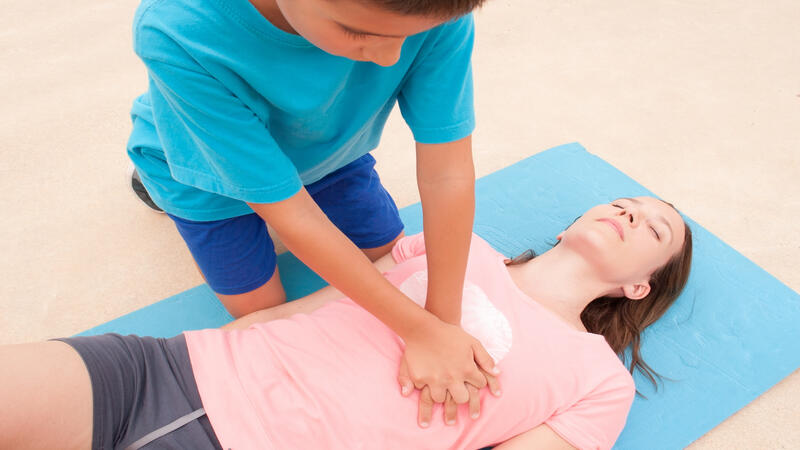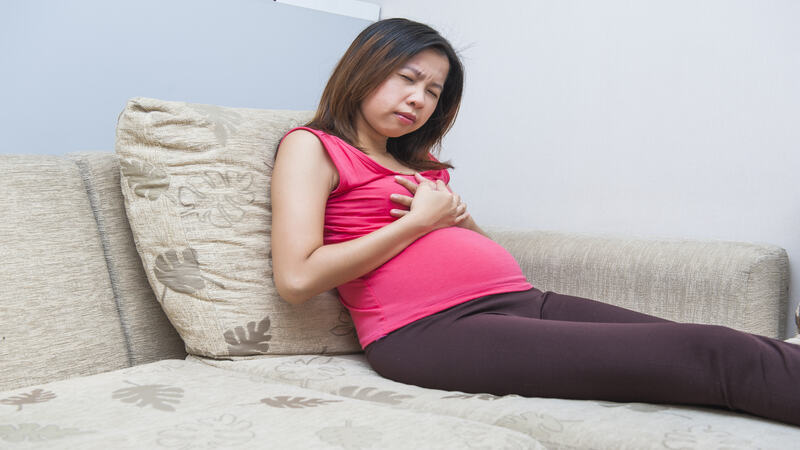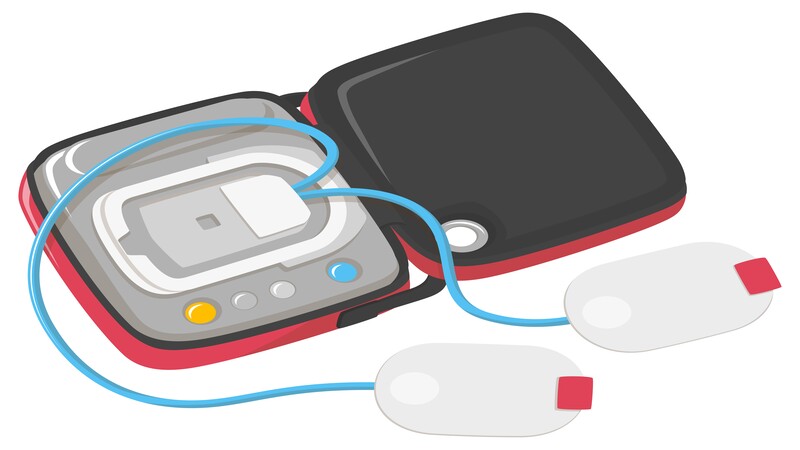
If you are pregnant, taking care of your health and safety should be of great importance to you and to the baby inside. Although pregnancy-related cases of cardiac arrest can be very low, prevention or even urgent response can be a difference between life and death. Training in CPR or cardiopulmonary resuscitation, is an essential procedure for emergency life support, which will restore your heartbeat and breathing back if it halts abruptly. However, CPR during pregnancy must be modified in some aspects so that it is safe for you and your baby. In a crisis, preparation spells the difference between life and death, and this knowledge empowers you to take charge of your safety in such an unpredictable scenario.
Why You Should Know: Understand the nuances of CPR for pregnant women. This can be reassuring—even in the face of a medical emergency, there are safe ways to care for both you and your baby. Be it an appreciation of how a slight lean to one side can bring in vastly increased blood flow, or it is about establishing subtleties of changed CPR compressions, knowledge makes you calm as well as react well in time. It gives you comfort knowing that medical teams are so well trained to deal with the same emergencies that you and your precious little one are covered during such moments.
What Is CPR ?

CPR stands for cardiopulmonary resuscitation. It’s a lifesaving technique used in emergencies when someone’s breathing or heartbeat has stopped. The purpose of CPR is to keep blood and oxygen flowing through the body to vital organs and the brain. You might use CPR if someone’s heartbeat or breathing stops after an electric shock, heart attack, or drowning (1) (2).
Is It Safe To Perform CPR on Pregnant Women?
CPR can be performed on pregnant women, but with some modifications that would protect the mother and baby. The mother can also be tilted at an angle to minimize pressure on some blood vessels, ensuring continued bloodstream flow into her heart and the fetus. In any emergency, CPR would save the lives of the mother and her baby in a very short time (3).
How To Determine If CPR Is Necessary

CPR is a life-saving technique used in emergencies. To know if CPR is needed when a woman is pregnant, check the following:
- Unconsciousness: If she doesn’t respond and does not wake up when you call her or gently shake her, then do CPR.
- No Breathing or Gasping: If the woman isn’t breathing or is only gasping for air, administer CPR.
- No Pulse: If you can’t find a pulse or if the heartbeat is too faint, begin chest compressions. (3A) (4) (5).
How to Perform CPR on a Pregnant Woman

The following are steps on how to give CPR to a pregnant woman, with references provided for more in-depth learning:
- Check for Responsiveness: Tap the pregnant woman gently and shout her name. If there is no response, you can proceed to the next step, CPR.
- Call for Help: Dial emergency services right away or ask someone else nearby to do so. Make sure help is on the way.
- Position the Woman: Do this gently but quickly. If you can, tilt her slightly to her left side by placing a rolled blanket or towel under her right hip. This will take pressure off of major blood vessels and improve blood flow to the heart and baby.
- Check for Breathing: Open the airway using a head tilt lifting the chin. Look for breathing/gasping. If there is no breathing/gasping, start CPR.
- Chest Compressions: Place your hands a little higher on the sternum than you usually do. Push hard and fast; aim for 100 to 120 compressions per minute. Allow complete chest recoil after each compression before starting the next compression.
- Rescue Breaths: After 30 compressions have been performed, you will need to provide two rescue breaths. To do this, pinch the woman’s nose shut with your fingers. Next, take a normal breath in and cover the woman’s mouth with your own. Finally, breathe into the woman’s mouth for about one second, watching for her chest to rise.
- Repeat: Continue performing 30 compressions and then give 2 rescue breaths until the woman begins to show signs of life or trained emergency help arrives (6) (7) (8).
How Common Is Maternal Cardiac Arrest ?

Maternal cardiac arrest is a rare but life-threatening medical emergency. The incidence varies from approximately 1 in 12,000 to 36,000 deliveries worldwide, depending on geography and quality of care. Though rare, the event has a high mortality rate for both the mother and the baby, requiring emergent interventions to help improve the chances of survival.
Some risk factors for maternal cardiac arrest include underlying heart disease, severe hemorrhage, amniotic fluid embolism, hypertensive disorders in pregnancy, and anesthesia-related complications (9).
What Causes Maternal Cardiac Arrest?

If a pregnant woman were to go into cardiac arrest, several pregnancy-related conditions could cause it. Some of the most common include severe bleeding, complications such as amniotic fluid entering the bloodstream, disorders related to high blood pressure (10), or an issue with the heart. In rare cases, a blood clot, infection, or reactions to medications given while in labor can play a role.
While maternal cardiac arrest isn’t common, medical teams are prepared for this type of emergency and will react quickly to prevent harm to the mother and her baby. With prompt treatment, many complications can be managed effectively.
Special Considerations Before Performing CPR on A Pregnant Woman

When you perform CPR on a pregnant woman, there are some special considerations to think about to keep both the mother and baby safe. These include the following:
- Position: woman should be slightly tilted to the left side to help blood flow to the baby. You can do this by placing a small pillow or towel under your right side or gently tilting your body.
- Chest Compressions: The chest compressions will be done a little higher up on the chest, in between the breasts.
- Emergency Action: In some cases, doctors may have to quickly get the baby out to help both you and the baby (11) (9a).
Can You Use An Aed On A Pregnant Woman?

An Automated External Defibrillator (AED) can be used safely on a pregnant woman. The purpose of an AED is to deliver a shock to the heart when someone is experiencing cardiac arrest, and it does not pose a risk to the baby. When a pregnant woman is in cardiac arrest, using an AED dramatically increases the likelihood of both mom and baby surviving the emergency (4a).
Maternal cardiac arrest is relatively rare but poses serious threats not only to the mother but also to the baby. However, with timely and proper CPR, the chances of survival may become highly elevated. Aware of the special conditions associated with a pregnant woman receiving CPR, such as rolling her onto her side, the manipulation associated with CPR on her chest, and early medical attention might salvage the lives of both at this point. Preparedness, awareness, and prompt intervention are crucial in successfully handling such occurrences.
FAQs
1. Can You Perform CPR on a Pregnant Woman?
YES!! CPR can be performed on a pregnant woman. It may require some additional care to ensure the safety of both the mother and the baby.
2. Which Side Do You Lay a Pregnant Woman On for CPR?
You should place the pregnant woman on her left side to promote better blood flow to the baby and reduce pressure on major blood vessels.
3. How Do You Modify CPR for a Pregnant Woman?
When performing CPR on a pregnant woman, you should:
- Put her on her left side to help with blood flow.
- For chest compressions, place your hands slightly higher on the sternum.
- Keep doing these compressions of about 2-2.4 inches at a rate of 100-120 per minute.
4. What Is LUD in CPR During Pregnancy?
LUD stands for “left uterine displacement.” This technique involves tilting the pregnant woman to the left to relieve pressure on the major blood vessels and improve blood circulation during CPR.
Reference
- Jesse Borke, MD, CPE, FAAEM, FACEP, Attending Physician at Kaiser Permanente, Orange County, CA. Also reviewed by David C. Dugdale, MD, Medical Director, Brenda Conaway, Editorial Director, and the A.D.A.M. Editorial team – https://medlineplus.gov/ency/article/000010.htm
- U.S. Department of Health and Human Services, National Institutes of Health, National Cancer Institute, USA.gov – https://www.cancer.gov/publications/dictionaries/cancer-terms/def/cpr
- Tomoyuki Iwai, Shinichi Inomata, Successful Perimortem Cesarean Section With Cardiopulmonary Resuscitation and Anesthesia: A Report of a Unique Case, Cureus, (2024) – https://www.ahajournals.org/doi/10.1161/CIR.0000000000000300#
- AVIVE, AED And CPR On Pregnant Women: How to Perform – https://avive.life/reports/cardiac-arrest-in-expecting-mothers/
- Gandhi A, Gandhi A, Glob. libr. women’s med., ISSN: 1756-2228 – https://www.glowm.com/article/heading/vol-13–obstetric-emergencies–cardiopulmonary-resuscitation-in-the-pregnant-woman/id/411353
- Lee, C., Vacaru, A., Agapian, J.V. (2024). ACLS in Pregnancy. In: Sinha, A.C., Pasca, I.F. (eds) Peripartum Care of the Pregnant Patient. Springer, Cham – https://link.springer.com/chapter/10.1007/978-3-031-62756-9_31#
- Australia Wide First Aid – How to perform CPR – Pregnancy – https://www.australiawidefirstaid.com.au/resources/cpr-guide-pregnancy
- Singh P, Bhalerao A. Cardiac Arrest and Resuscitation in Pregnancy: A Case Report. Cureus. 2023 Mar 27;15(3):e36771 – https://pmc.ncbi.nlm.nih.gov/articles/PMC10133586/
- Madden AM, Meng ML. Cardiopulmonary resuscitation in the pregnant patient. BJA Educ. 2020 Aug;20(8):252-258 – https://pmc.ncbi.nlm.nih.gov/articles/PMC7807943/
- Campbell TA, Sanson TG. Cardiac arrest and pregnancy. J Emerg Trauma Shock. 2009 Jan;2(1):34-42 – https://pmc.ncbi.nlm.nih.gov/articles/PMC2700584/
- Skills Training Group, How to Perform CPR on a Pregnant Woman in the UK: Essential Guidelines – https://www.skillstg.co.uk/blog/how-to-perform-cpr-on-a-pregnant-woman-in-the-uk-essential-guidelines/
